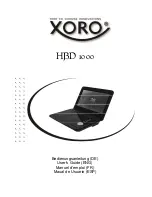
7
Pressure Regulation and Engine Speed Control
The system uses two control systems. One, an air pressure control switch and the other, an engine speed
control. This allows for instant response to air demands based on air flow and reduction of load on the
engine and reduces fuel usage. These items are set at the factory and should not require adjustment.
Adjusting the System
If insufficient airflow is developed under high demand conditions, check the engine RPM.
The throttle control is preset for maximum delivery by the system at all airflow demands within the
unit’s
abilities, but in some instance may require adjustment by the user. This is done by adjusting the linkage
on the throttle control to increase or decrease the engine RPM.
The cut out and cut in pressure of the compressor can be adjusted on the pressure switch (clockwise to
increase pressure). Consult your Airworks dealer if you have any questions before attempting
adjustment.
Airflow and system pressure are related. As the cfm requirements increase, the pressure produced
during flow, as with any air system, diminishes. The Twister is designed to efficiently run instruments
requiring air at 90 psi or less (
manufacturer’s standard psi rating).
If you must set up a system without knowing the demands on the system, you can make adjustments by
using an orifice in the outlet to stimulate tool use. A system testing and adjustment tool is available from
Airworks (ATT001).
If unit cycles rapidly during tool/equipment use, this indicates the compressor is producing more air than
tool/equipment requires. Engine rpm may be decreased to lower air volume produced. Contact dealer for
proper procedure.










































